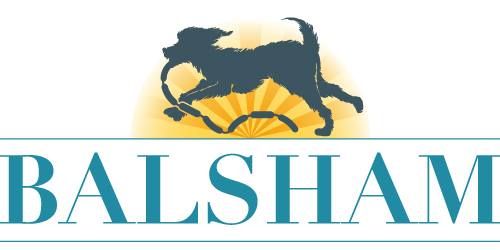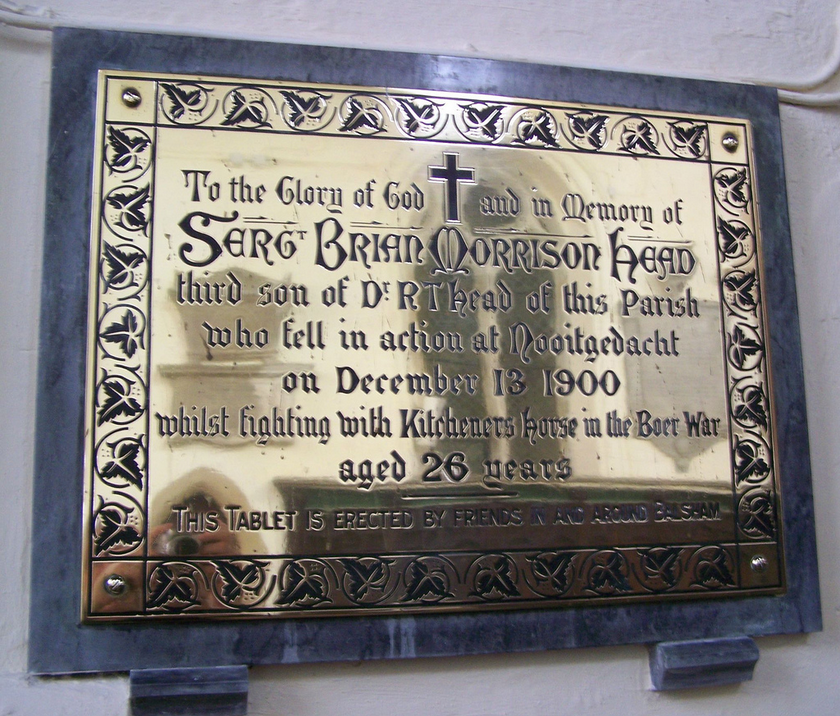Church Brasses
There are three Brasses at Balsham. Two are for former Rectors – John Sleford d.1401 and John Blodwell d.1462 and the third is for an unidentified Knight c.1480s. None of these is now in its original position where, as far as is known, the bodies of John Sleford (Just inside the Chancel) – to find out more please click on the accordion links below:
Your Title Goes Here
John de Sleford c.1330-1401
John Sleford was a “King’s Clerk” – a man in Holy Orders but primarily a Civil Servant. He began his career in the household of Philippa of Hainault (Queen to King Edward Ill) and on the merger of her household with that of the King he was transferred to the Wardrobe Administration or ‘Supplies Department’ of the Crown. He became Keeper of the Privy Wardrobe of the Tower in 1365 (this department dealt with small and valuable objects, including arms, canons and gunpowder), and Keeper also of the Great Wardrobe, which dealt with bulk supplies, in 1371. In both these offices he succeeded Henry Snaith, whom he also followed as Rector of Balsham. He probably took his name from the town of Sleford, Lincs; there is also mention of (a brother ?) William Sleford, in the royal service as a Clerk of Works and Dean of the King’s Free Chapel of S. Stephen, Westminster. King’s Clerks had limited basic salaries, augmented by Fees of Office and supplemented by ecclesiastical income drawn from various appointments obtained for them by Royal pressure upon the Bishops.
This is how John Sleford became Rector of Balsham in the mid-1360s and the Public Records reveal his many appointments. Such King’s Clerks were seldom in their parishes, where pastoral work was carried out by substitutes, but in the case of John Sleford there is evidence of his local activity from before the time he lost his office as Keeper of the Wardrobe, as well as from afterwards. He held the lease of Oxcroft Farm in the 1370s, he had land at Linton. His Brass records that he “built the church” and gave the stalls. In 1384 he is known to have owed £400 (later marked paid) and perhaps by this he financed rebuilding of the Nave with its Clerestory windows and two side aisles.
He was closely identified with the “old regime” of King Edward III which, after the death of Queen Phillipa, had been corrupted by the influence of the King’s Mistress, Alice Perrers. A rival establishment gathered about the King’s grandson (son to the Black Prince), later King Richard II. It was Sleford’s duty to superintend the burial of King Edward III, for which records show his acquittance, and with the installation of the new regime Sleford lost his Royal appointment as Keeper of the Wardrobe in 1377 and, probably thereafter retired to Balsham There is a hint of resignation in the inscription on the Brass.
The Sleford Brass
His Brass shows him wearing a Cope decorated with named Saints, each holding the proper symbol. There are the two SS. John (for his name); the two SS. Mary (the Mother of Jesus and the Magdalene); two popular women saints in the mediaeval era, SS. Margaret and Katherine; S. Etheldreda for Ely and S. Wilfrid (who had received Etheldreda’s monastic vows) for Ripon where Sleford was a Canon.
The Brass carries his monogram IS; armorial bearings for his Royal patrons, Queen Philippa of Hainault and King Edward III; and symbols of the Evangelists Mathew, Mark, and Luke but that for John is missing. At the top his path to judgment is depicted – his soul is on a sheet held by two angels while above is God as Holy Trinity and the inscription (freely rendered to English “O Holy Trinity, I beseech you to receive me at the end.”
Within the border is a verse inscription with some words abbreviated or left understood. It tells of his career, clerical appointments, connection with King Edward III, and work at Balsham.
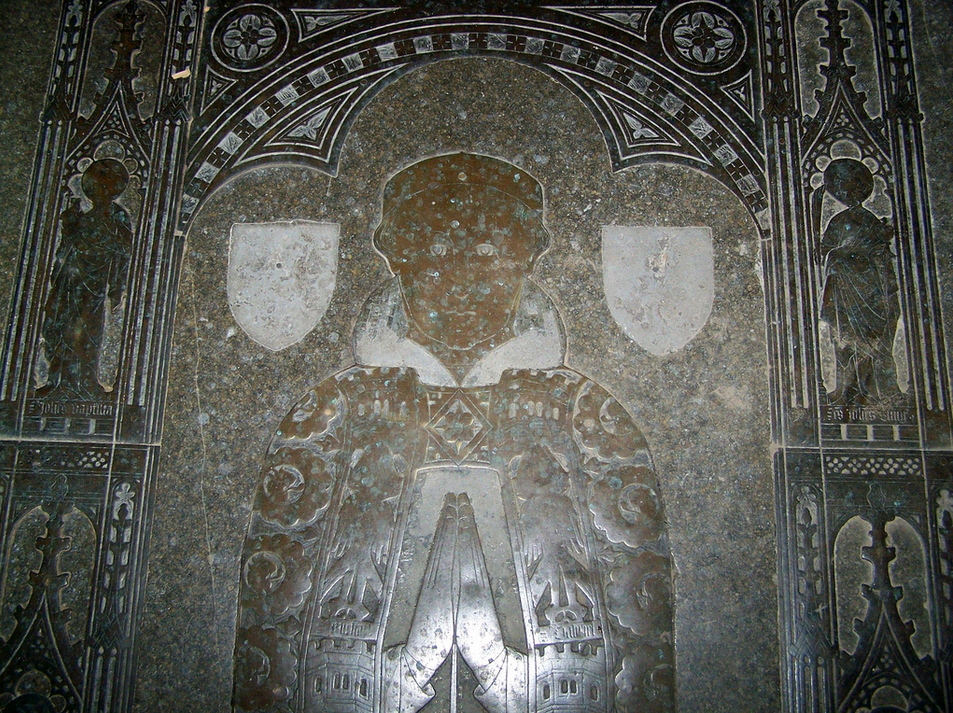 John Blodwell
John Blodwell
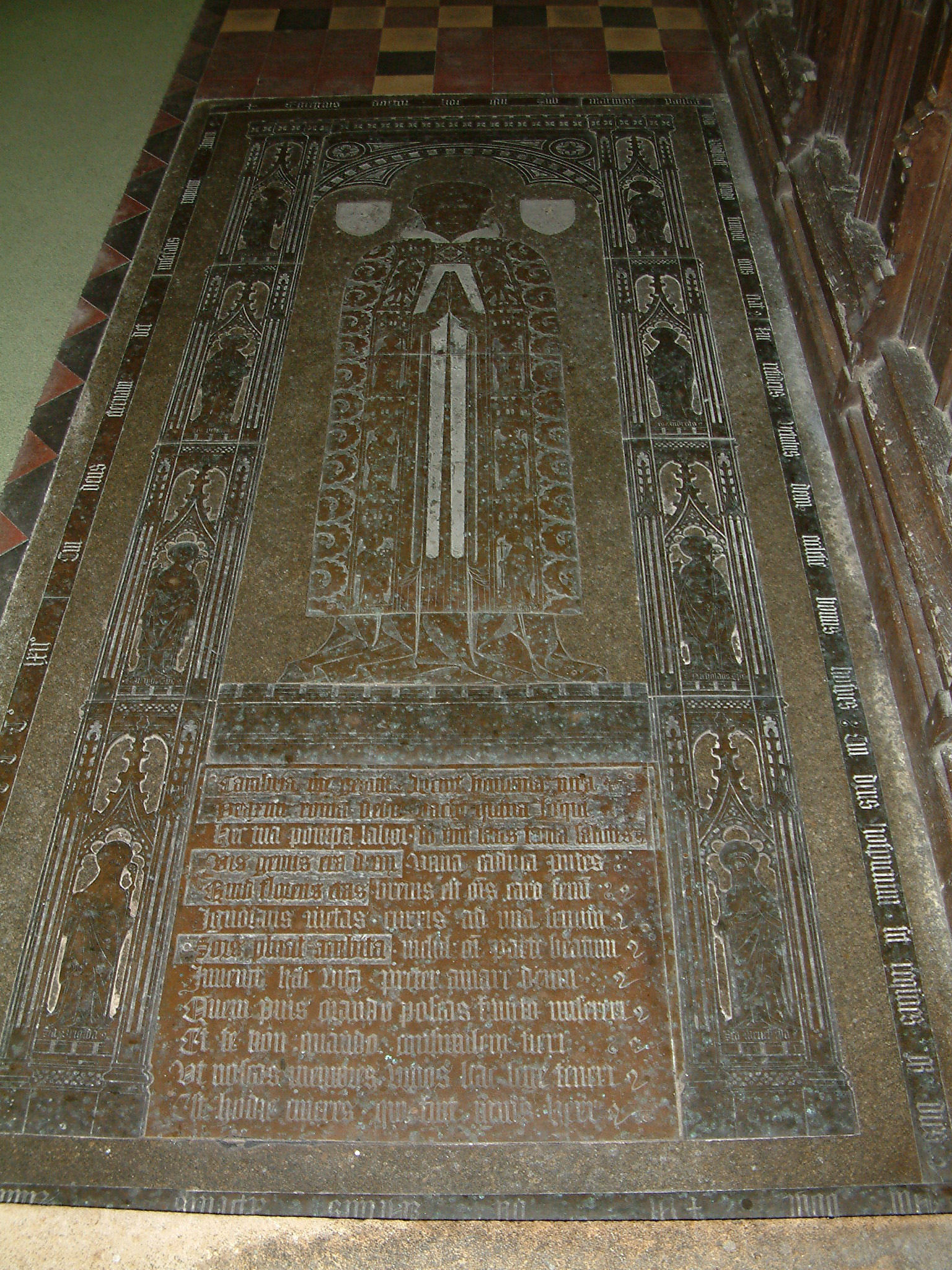 John Blodwell
John Blodwell 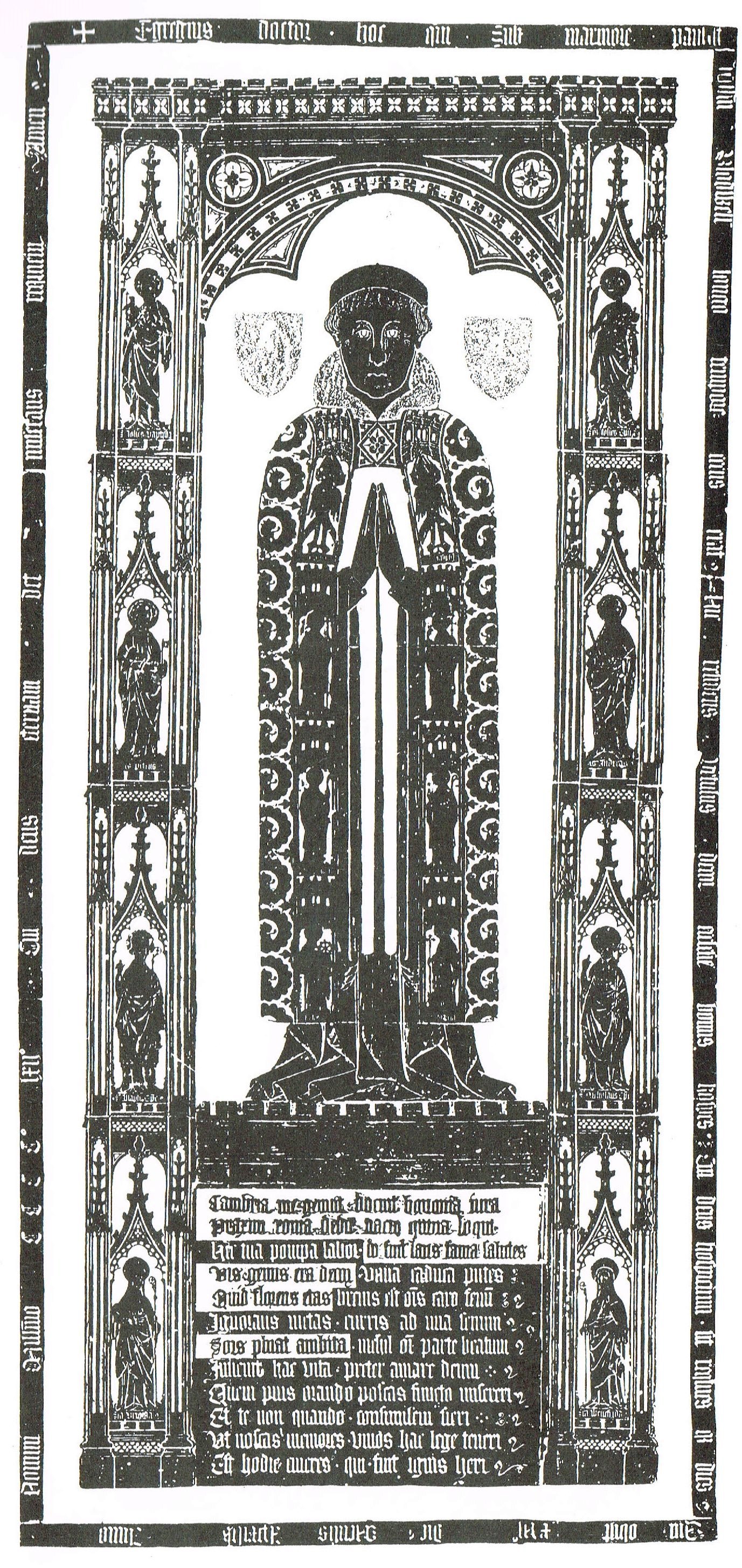 John Blodwell Drawing
John Blodwell Drawing
The Blodwell Inscription in Modern Idom
The eminent doctor John Blodwell rests for a while beneath this stone. He was blind for a long time; while he lived here as a little old man he was an ornament of the Church and gave kind refreshment to his fellow men. May God himself be to him refreshment, light and peace. He died on the sixteenth of April 1462. May God in his mercy give eternal rest. Amen.
| Blodwell. | Wales gave me birth, Bologna taught me both systems of law (i.e. both Roman and Canon Law); Rome gave me the opportunity of practising law, and five nations gave me knowledge of their languages (i.e. English, Welsh, Latin, French and Italian). | 12 |
| Vox Secunda. | All these achievements of yours have become a burden to you. | 3 |
| Blodwell. | Praise, fame, good health, strength, rank, long life, surely these things can be offered to God (or: may be (enjoyed as they) come from God)? | |
| Vox Secunda. | You might as well think of them as vain and transitory. | 4 |
| Blodwell. | What is the flowering of life, then ? | 5 |
| Vox Secunda. | All flesh is grass, which soon dies. Do you(Now addressing the reader, not Blodwell).beseech God in your prayers to have mercy on the dead man; beseech him also that, before you are like him, you may become aware that living men who are not oblivious are controlled by this law – the man who | 9 |
The Knight in Armour
The identity of the Knight is unknown. The Armour is “Yorkist” in style and points to the latter 1470s. Balsham was an ecclesiastical manor and there was no influential local family to which he might be related, though the Allingtons of nearby Horseheath may be a possibility forbears and descendants are buried at Horseheath but this is only conjecture.
William Allington d.1485 was killed at the Battle of Bosworth, his burial place is unknown; his forbears and descendants-are buried at Horseheath but this is only conjecture.
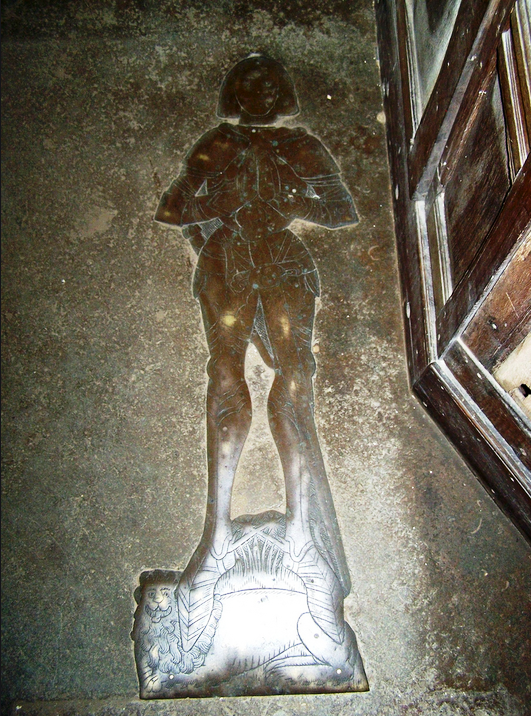
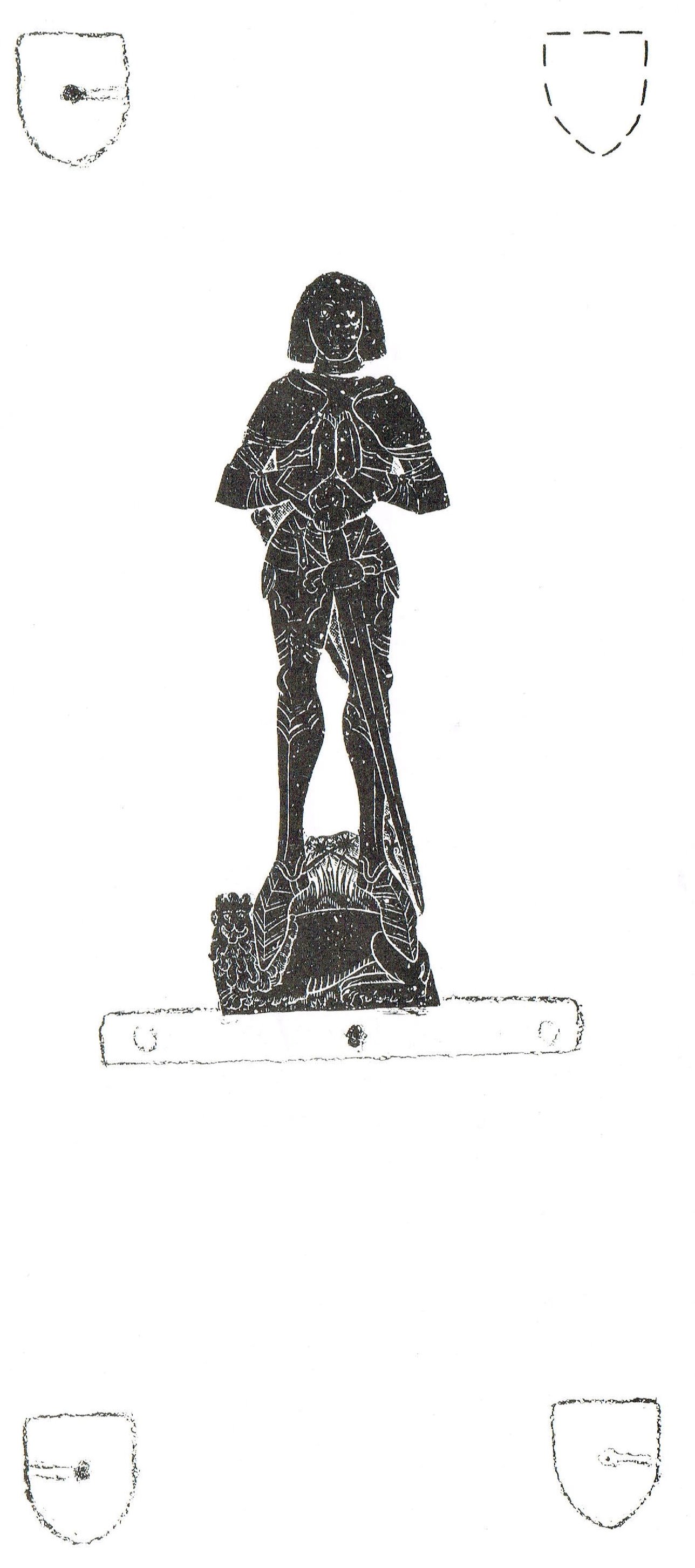
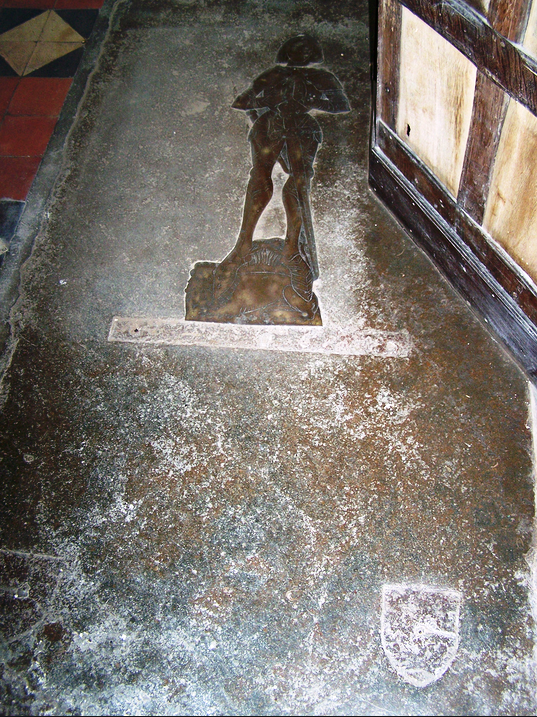
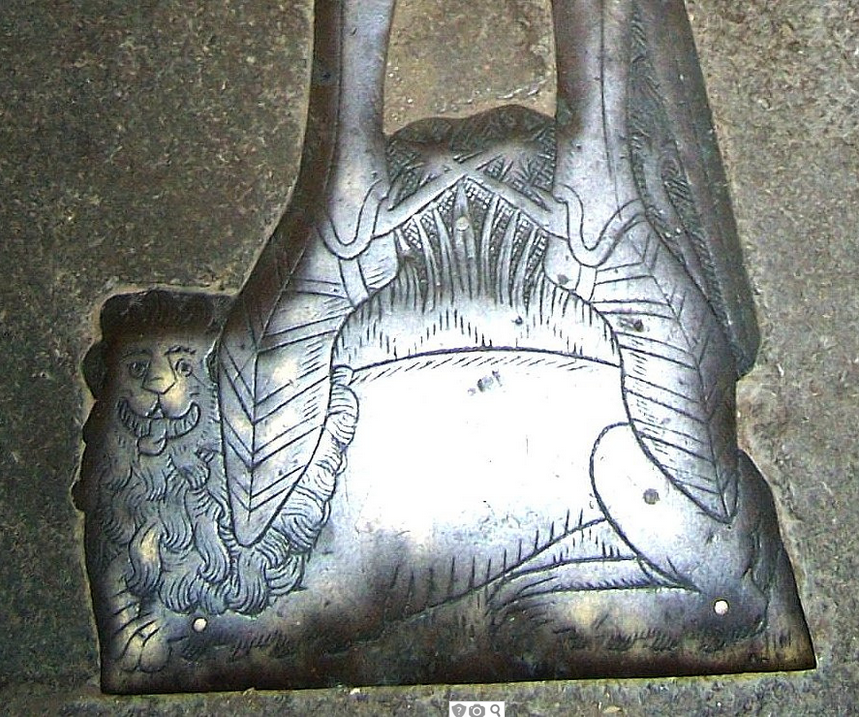 Lion at the feet of the knight
Lion at the feet of the knight
The Sleford Inscription: Latin text
P(er)sonis trine, posco me susc(ipe)re fme.
| Io(an)n(es) Sleford, di[ct(us) Recto]r, mu(n)do q(ue) relict( us) | 1 |
| Bursa no(n) strict(us), lacet hie s(u)b marmor(e) pict(us), Fautor iustor(um), consta(n)s ultor vitior(um),Que(m) rex Edward(us) dilexerat, ad mala tard(us). | 3 |
| Gardroba(m) rexit illi(us) du(m,) bene vixit. | 5 |
| Eccl(es)iam struxit ha(n)c; nu(n)q(ua)m postea luxit;Haec fecit stalla, large fu(n)de(n)s q(ue) m(e)talla. | 7 |
| Canonic(us) p(ri)mo Wellis, Ryppon fuit imo. Edwardi festo decessit fine modesto,[Regis et Anglorum qui detulit acta re(gn)or(um), | |
| (Anno)] mille(si)mo quadri(n)gen(tensim)o quoq(ue) pleno. | 11 |
| Huic adde(n)s p(ri)mu(m), deductu(m) corp (us) ad imu(m). O cleme(n)s Chr(ist)e, cae los precor intr(e)t ut iste. | 13 |
| Nil habeat triste, q(uia) p(er)tulit o(mn)ib(us) iste]. |
The Sleford Inscription: Literal translation
John Sleford, appointed as Rector and having been abandoned by the World, not a severe man in the use of money (lit: as to his purse, in other words not a mean man), lies portrayed here, beneath the stone. He was a protector of just men and a constant punisher of vices, Whom King Edward, lingering into evil days (lit: slow towards evils), had loved. He ruled his (the king’s) Wardrobe while he prospered (lit: lived well). He built this church; he never grieved for it afterwards (or: he never shone afterwards). He made these stalls, pouring out gold and silver liberally. He was a Canon first of Wells, then of Ripon. He, who recorded the acts of the English kingdoms, Departed (this life) by a gentle death on the feast of Edward the King (or: he departed this life by a gentle death on the feast of Edward the king, who denounced the acts of the English kingdoms), the year 1400 being complete. His body was carried down to the grave, adding to this the first (year of the new century). O merciful Christ I pray that this man may enter heaven. May he know nothing sorrowful, because he (Christ) bore it (i.e. sorrow) for all men.
O one, threefold in your persons, I beseech you to receive me at the end
The Blodwell Inscription: Latin text
(About the Margin).
| Egregius doctor, hoc qui sub marmore pausat,Joh(a)n(nes) Blodwell, longo tempore caecus erat | 1 |
| Hic residens vetulus, decor ecc1esiae, bonus hospesCui deus hospitium sit, requiesq(ue), dies. | 3 |
| Qui obiit (sexto decimo) die Mensis AprilisAnno domini mill(esi )mo c.c.c.c.lxjj | 5 |
| Cui deus aetemam det miserans requiem. Amen. | 7 |
(At the Foot).
| Blodwell. | Cambria me genu it, docuit Bononia iura;Praxim Roma dedit, natio quina, loqui | 12 |
| Vox Secunda. | H(a)ec tua pompa labor. | 3 |
| Blodwell. | De(o) sint laus, fama, salutes,Vis, genus, (a)era, decor. | 4 |
| Vox Secunda. | Vana caduca putes | |
| Blodwell. | Quid florens (a)etas ? | 5 |
| Vox Secunda. | Brevis est o(mn)is cara f(a)enu(m)Ignorans metas, Curris ad ima senum. | 6 |
| Blodwell. | Sors pluat ambita ? | 7 |
| Vox Secunda. | Nichil o(mn)i parte beatumlnvenit hac vita, pr(aet)er amare deum;Quem pius orando poscas functo miserereEt te, non quando consimilem, fieriUt noscas memores vivos hac lege teneri:Est hodie cineres, qui tuit ignis hieri | 89 11 |
The Blodwell Inscription: Literal translation
About the margin.
The eminent doctor John Blodwell, who stays for a while beneath this stone, was blind for a long time. A little old man, living here, he was an ornament of the Church, a good host; to whom may God be refreshment, rest and light (lit. day) He died on the sixteenth day of the month April, in the year of our Lord 1462; to whom may God, pitying (him) give eternal rest.
At the foot.
| Blodwell. | Wales gave me birth, Bologna taught me the laws;(i.e. both Roman and Canon Law);Rome gave me the practice of law, and five nations(lit: the five each nation) gave me speech. | 1 2 |
| Vox Secunda. | This your outward show has become a trouble. | 3 |
| Blodwell. | Praise, fame, good health, strength, rank, long life, beauty, may be offered to God (or: may come from God) | 4 |
| Vox Secunda. | You may think them vain, transitory things. | |
| Blodwell. | What is the flower of life (lit: the flowering age) ? | 5 |
| Vox Secunda. | All flesh is short lived grass. Not knowing the limits, you are running to the end (or lowest point) of old men. | 6 |
| Blodwell. | Fate may rain down the things strived for? | 7 |
| Vox Secunda. | The pious man finds nothing happy in this life on any side, except to love God; whom (may you) beseech in prayer to have mercy on the dead man, and (beseech) that before (lit: not when) you are like him you may become (such a man) that you may know that mindful living men are restrained by this law: he is ashes today who was fire yesterday. | 8 911 |
References - WNCG
The Monumental Brass Society – P. J. Heseltine, The Figure Brasses of Cambridgeshire, Solo Publishing, 1981 has a working bibliography.
For John Blodwell refer to Revd Canon William Nicholas Charles Girard:
John Blodwell, Rector of Balsham, Transactions of the Monumental Brass Society, 1993 Vol XV Pt. 2 at pp.119-136.
WNCG. [Revd Canon William Nicholas Charles Girard] February 1998.
The Monumental Brasses of Cambridgeshire
The Monumental Brasses of Cambridgeshire
By
William Lack, H Martin Stuchfield and Philip Whittmore
BALSHAM, Holy Trinity.
John de Sleford, rector, master of the wardrobe to Edward III, [chaplain to Queen Philippa, Prebendary of St. Stephen’s, Westminster, Archdeacon of Wells], canon of Ripon and Wells, rebuilder of the church and erector of the stalls, 1401, in cope with SS., B.V.M. and Child, John Evang., Katherine, Paul, Mary Mag., – John Bapt., Audrey, Peter, Margaret, Wilfrid (bishop), triple canopy with Trinity, soul, seraphim, etc., arms of England and of Queen Philippa, marg. inscr. in 14 Lat. vv. mutil., Evang. symbols at comers (1 symbol lost), 3 shs. (1 other lost), prob. engr. c.1390, C. Brit. Lib. Add. MS. 5807, f.70v (Cole drg. of brass complete except for lower dext. sh.), 9461, f.33r (Lysons drg. of brass almost compete); Gittings, fig .52, p.53; Heseltine, Cambs., no.4 (after Lysons); Lysons, Mag. Brit., II, 66 (almost complete); Mann, pI.22a (eff.); M.B.S.Trans., VIII, 232, pI.xiv; Norris, Craft, fig.56 (canopy), and Memorials, fig.88; Proc. C.A.S., XXXVIII, pI.2, opp. p. 57, XLIV, pI. XIb, opp. p.46; Tennenhaus, pI. 4; V. and A. Mus. List, pI. 49, 2nd ed., pI. 55. Craven Ord impression in Brit. Lib. Eff. 1607 x 577 mm, canopy 2504 x 895 mm, margo inscr. 2608 x 1178 x 40 mm, top dext. sh. 149 x 115 mm, top sin. sh. 147 x 115 mm, upper sin. sh. 147 x 115 mm, roundels 107 mm dia., Purbeck slab 2765 x 1350 mm. Style: London B.
Dr John Blodwell, born in Wales, studied law in Bologna and practised in Rome, [Prebendary of Lichfield and Hereford, canon of St. David’s, dean of St. Asaph’s, rector of Balsham], “longo tempore cecus erat”, 1462, in cap and cope with SS. Michael (angel), David (archbishop), Thomas of Hereford (bishop), Katherine, Gabriel (angel), John of Beverley (archbishop), Chad of Lichfield (bishop) and Margaret, single canopy with entablature and SS. John Evang., Peter, Asaph (bishop), Brigid, John Bapt., Andrew, Nicholas (bishop) and Winifred, 12 Lat. vv., margo inscr. and 2 lead shs., worn, formerly N., now C. Artistes, Artisans et Production, fig.3, p.151, nos.18, 19,28,37,40 (lettering); Boutell, Br. and Slabs, 175 (part of canopy); Brit. Lib. Add. MS. 5807, f.72v (Cole drg.); Builder, CII, 71; Cambridge Camden Soc. Illust., no.3, p.73; Heseltine, Cambs., no.5; Lysons, Mag. Brit., II, 66 (drg. with missing parts of margo inscr.); M.B.S. Trans., XV, 120, 125-35 (details); Meara, Pugin, fig.12, p.28 (after Cambridge Camden Soc.); Specimens of Lettering, nos. 110, 111, 120, 129 and 132 (lettering); v. and A. Mus. List, pI.49, 2nd ed., pI. 55; V.C.H., Cambs., VI, p.112 (photo of C. with brass in situ); Ward, fig. 14 (at end). Craven Ord impression in Brit. Lib. Eff. 1477 x 479 mm, vv. 535 x 605 mm, canopy 2500 x 1035 mm, margo inscr. 2700 x 1250 x 43 mm, upper dext. sh. 143 x 118 mm, upper sin. sh. 135 x 116 mm. Purbeck slab 2775 x 1355 mm. Style: London B.
The Man in armour., c.1490; inscr. and 4 shs. lost; wom, formerly N., now N.A. Brit. Lib. Add. MS. 5807, f.74v (Cole drg.); Heseltine, Cambs., no.2. Craven Ord impression in Brit. Lib. Eff. 965 x 304 mm, inscr. indent 55 x 615 mm, sh. indents 160 x 135 mm, Purbeck slab 2435 x 1120 mm. Style: London D.
Inscriptions on Brass Plates
a. Inscriptions.
- J. Halcombe, rector, 1878, mur., C.
b. Inscriptions.
John and Caroline Prince, Jane Prince, sister to H. Prince who presented the pulpit in 1878, on pulpit step, N.
c. Inscriptions.
Sergt. Brian Morrison Head
Sgt. Brian Morrison Head, son of Dr R. T. Head who fell in action at Nooitgedacht, 1900, aged 26, while fighting with Kitchener’s Horse in the Boer War, his friends pos., mur., e.
d. Inscriptions.
with cross on rect. pI. John Joseph Halcombe, M.A., rector 1874-1910, 1832-1910, engr. by J. Wippell & Co. Ltd., Exeter & London, mur., e.
e. Inscriptions.
on parish hearse presented by Mr & Mrs J. Goodchild, 1915, N.A.
f. Inscriptions.
Capt. Raymond Evelyn Head, M.e. (and Bar), The King’s Liverpool Regt., died of wounds, 1918, aged 34, mur., N.A.
g. Inscriptions.
Howard and Peggy Cutting, 1958, mur., N.A. Not seen in 1994.
h. Inscriptions.
Alfred Ernest Aston, 1883-1961, on bookcase, N.
i. Inscriptions.
with Guide badge. Ann Elizabeth Lingham, 1945-1967, Queen’s Guide and Guider of the 1 st Balsham Compy.; on seat given by the Guides of Cambridgeshire and Isle of Ely, 1968, churchyard.
j. Inscriptions.
recording gift of clock by Mr & Mrs Ernest Samworth and other parishioners, 1977, mur., tower.
k. Inscriptions.
recording gift of stairs in tower in 1980 in memo of Mary Alice Bragg, 1903-1949, and Eleanor Kinmont Bragg, 1903-1979, by her husband Harry Ronald Bragg, mur., tower.
l. Inscriptions.
David Evans, n.d., on seat, churchyard.
INDENTS & LOST BRASSES:
- Indent?, ?inverted Unio Purbeck slab 1930 x 895 mm, churchyard.
- Lost brass, inscription. Robert Gedding, 1493, e. Recorded by Cole.
- Lost brass, inscription. Margaret Lindsell, 1604, N. Recorded by Cole.
- Lost brass, inscription. John Lindsell, 1612, N. Recorded by Cole.
- Lost brass, inscription. Robert and Margaret Pettit, 1623, N. Recorded by Cole.
References:
Antiq. Jour., XVI, 288;
Arch. Jour., L, 1893, 96, 100;
B.A.A. Jour., 3S, XII, 92;
CXXXI, 1978, 73;
Benton, 109, 111, 2nd ed., 113-4;
Bib. Top. Brit., VI, 109;
Blomefield, ColI. Cantab., 200-4; Bod. Lib. MS. Gough Misc. Ant. 16, MS. Top. Camb. e.1, f.145-6; Boissier, 49-50;
Brit. Lib. Add. MS. 5807, f.7Or, 71r, 73r, 76r; 9461, f.32v, 33v, 32478, f.102, 117, 134,32481, C.1, 32488, A.2, 32489, D.l, 32490, G.7, H.1O, 0.36;
Burrell, H. J. E., The Church of the Holy Trinity, Balsham: Notes on the Church, 4th ed. 1966,2-4;
Cambridge Camden Soc. Illust., no.3, 73-84;
Conybeare, Highways, 216-8;
Conybeare, Rides, 19;
Cox, 54-5;
Evelyn-White, 5;
Gardner, 234;
Gough, II, pt.3, ccxxxiv, cccxv, pt A, 9-10, 196-7, pt.5, 373;
Haines, II, 31, 253;
Heseltine, Cambs., 6, 17-8; Heseltine, Heraldry, 12; Kemp, 56, 184;
Lysons, Mag. Brit., II, 66-9, 85; Manning, 11;
M.B.S. Trans., II, 237-41, IX, 133-5, 138, X, 9-11, XV, 119-36;
Meara, Pugin, 24, 29, 68; M.S., 55-6;
M.S.R., 1980;
M.S. Revision, Cambs., 1, 3-5;
Murray’s Handbook, 470;
Norris, Memorials, 61-2, 68, 70, 145-6, 150;
Palmer, Mon. Inscrs., 6-7; Parker, no.144;
Proc. C.A.S., XXXVIII, 57-8, XLIV, 44;
Proc. Soc. Antiq., 2S, VI, 452, 456;
Simpson, 12;
Soc. Antiq. MS. 423, III, fAr, 5v, 5r, 38r, MS. 700, MS. 87j, I, f.2-5;
Soc. Antiq. Rubbings, 4/4-5;
Stevenson, Supplement to Bentham, 15; Tennenhaus, 21;
Trans. C.H.A.S., III, 90;
U.L.C. Add. MS. 21, f.88;
V.C.H., Cambs., VI, 133.
